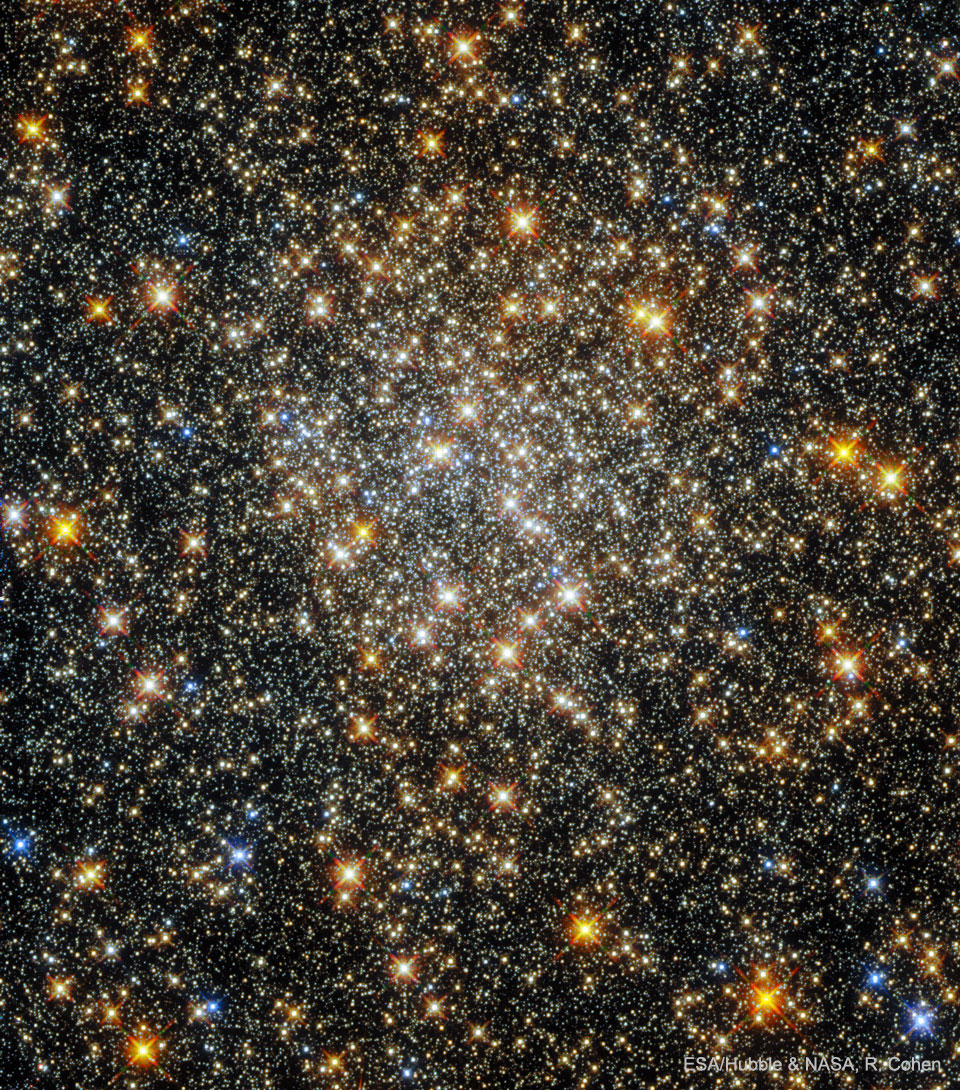Palomar 6: Globular Star Cluster
Discover the cosmos! Each day a different image or photograph of our fascinating universe is featured, along with a brief explanation written by a professional astronomer.
Explanation: Where did this big ball of stars come from? Palomar 6 is one of about 200 globular clusters of stars that survive in our Milky Way Galaxy. These spherical star-balls are older than our Sun as well as older than most stars that orbit in our galaxy's disk. Palomar 6 itself is estimated to be about 12.5 billion years old, so old that it is close to -- and so constrains -- the age of the entire universe. Containing about 500,000 stars, Palomar 6 lies about 25,000 light years away, but not very far from our galaxy's center. At that distance, this sharp image from the Hubble Space Telescope spans about 15 light-years. After much study including images from Hubble, a leading origin hypothesis is that Palomar 6 was created -- and survives today -- in the central bulge of stars that surround the Milky Way's center, not in the distant galactic halo where most other globular clusters are now found.
Authors & editors:
Robert Nemiroff
(MTU) &
Jerry Bonnell (UMCP)
NASA Official: Phillip Newman
Specific rights apply.
NASA Web
Privacy Policy and Important Notices
A service of:
ASD at
NASA /
GSFC
& Michigan Tech. U.
When you subscribe to the blog, we will send you an e-mail when there are new updates on the site so you wouldn't miss them.

